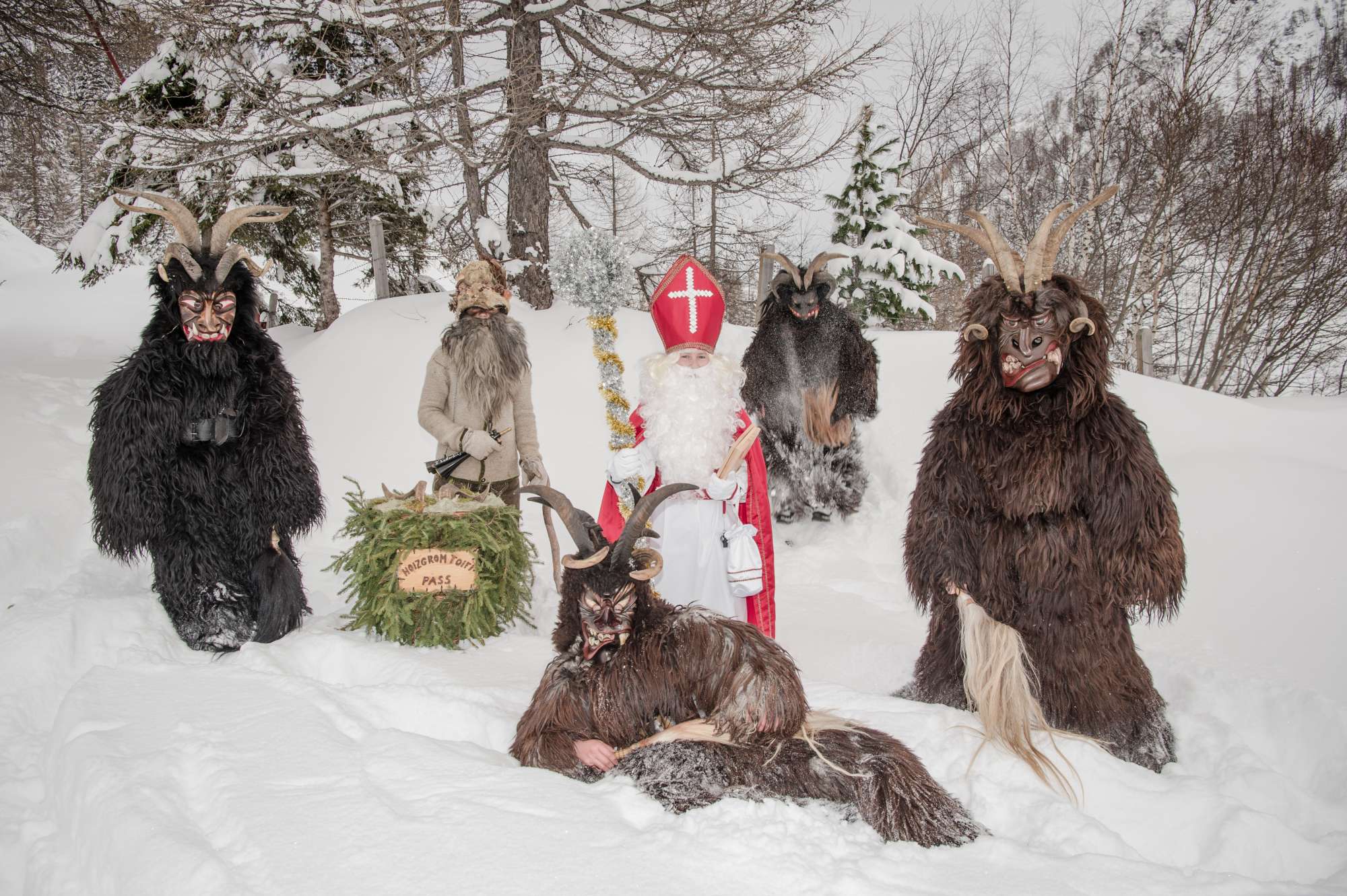
Customs in Gastein around Christmas
When the days become shorter and the first snow falls, then the "stade Zeit" begins in Gastein and with it the time when pre-Christmas customs are cultivated. Convivial Advent wreath making, incense burning in the mystical Raunächten, Passenlauf and the "Bachlschneid" are still carried out according to tradition. At the Thermenhotels Gastein, guests experience these rites up close!
Traditional smoking
At the time of the Raunächte, the scent of incense and dried herbs is in the air. They extend over 12 days, but the nights of incense are 21.12. (Thomas night), 24.12. (Christmas night), 31.12. (New Year's Eve) and 5.1.(Epiphany night). During these mystical nights, according to legend, a fierce battle for home and farm takes place. The incense is supposed to keep the evil away from the house, clean the rooms and bring protection and blessing for all inhabitants. Therefore, many families still fill incense pans with embers from the stove and add herbs so that the smoke spreads throughout the house.
On 28.12. master incense smoker Friedrich Kaindlstorfer from the Center for Traditional European Medicine in Bad Kreuzen performs this ceremony together with the guests of the spa hotels and burns the incense to drive out demons!
Gastein Krampus Run
At the time of Krampus and St. Nicholas, i.e. on December 5 and 6, the traditional Passenlauf takes place throughout the Gastein Valley. Together with St. Nicholas, the figures with the attached Bockhörndln move from house to house, sometimes accompanied by an angel. The bells, which each Passe carries, announce the visit with their frightening noise already long before. While St. Nicholas mainly praises the children for their good deeds and reprimands them for their bad ones, the Krampuses are supposed to keep the evil spirits away from the house or drive them away.
What is special about the Gastein Valley is the originality of this ancient custom dating back to the 18th century. Therefore, long before December 5, all Gasteiners are "kramperlnarrisch"!
The Krampuses belong to the Schiachperchten. Their costume consists of long coats or pants made of sheepskin and the elaborately carved - passed down from generation to generation - wooden larvae with the buckhorns attached. Additionally, with willow rods and bells - they date back to the time when muleteers crossed the Tauern with horses - they look more than fearsome.
Each "pass" consists of several Krampuses, a basket carrier, the "Girzeltroger", who carries bakeries and nuts, and of course St. Nicholas. In Gastein there are 100 such passes and all of them have their own name, which has also been handed down for generations, such as "Hochalm Pass", "Stubner Pass" or "Hoitzgrom-Toifi Pass".
The Czerny family also upholds this tradition in their family. Son Hubertus already has his own pass and on December 5, the Passen visit the Thermenhotels Norica and Alpina.
Bachlschneid
This is a custom that is mainly upheld in Pinzgau and Pongau. December 24 is traditionally called Bachltag in Gastein. The word is derived from "bake", since cookies were never missing from any Christmas celebration. In addition, according to peasant tradition, all knives in the house must be sharpened on December 24 = Bachlschneid! Their cutting should then last the whole year. In the afternoon, the Bachlboschen, a bush made of spruce twigs and shrubs, is tied and placed in the parlor next to the holy picture. Also part of the Bachltag is the Bachlkoch. It consists of milk, flour, salt, butter and honey and is still part of the Christmas menu in families today. It is also said that the Bachlkoch must be eaten, otherwise it means bad luck and Frau Perchta (see Gastein Perchten) will haunt the house with her evil spirits!
The Gastein Perchten
The Perchtenlauf in Gastein dates back to the 14th century and is thus one of the oldest traditional events in the province of Salzburg. It was first mentioned in a document here. In 2011, the Gastein Perchten were designated as an intangible cultural heritage by the Austrian UNESCO Commission.
In Gastein, it was possible to preserve this custom as a piece of cultural heritage in its most original form. It takes place only every 4 years always on 2 days in the period from 1 to 6 January. 160 people participate in this event, about 30 of them are cap wearers. According to old custom, women are still not allowed to participate. This Perchtenlauf is for the Kappenträger also a sporty challenge, because the caps have a weight of up to 50 kg, are up to 2.5 m high and must be carried for 10 hours over a distance of approx. 12 km per day!
The figures:
The Glockenträger is a particularly conspicuous figure that has its place in the procession between the Schnalzer and the Vorteufel at the beginning of the procession.
The Schnalzer, also called Rösslreiter, is one of the noisy Perchten. His task is to announce the Perchtenzug and to reawaken the vegetation.
The Hauptmann: He is the organizer and has many tasks to do during and apart from the Perchtenlauf.
Frau Perchta shows the two sides of a person - the good and the evil - in one figure.
The Vorteufel: with his grim demeanor he clears the way for the following Perchten.
In addition, there are other figures, such as "the silver jug", "the Gastein cap", "the rose cap", the onion tower", "the spring flower cap" and many more.
